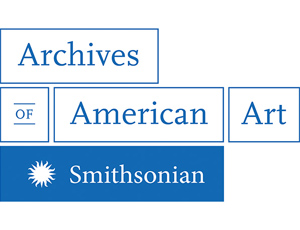New Collections: Emanuel Martínez Papers
Josh T. Franco writes about the large addition to the Emanuel Martínez Papers, now in the collections of the Archives of American Art, illuminating Martínez’a work with incarcerated youth and involvement in the Chicano movement
:focal(500x395:501x396)/https://tf-cmsv2-smithsonianmag-media.s3.amazonaws.com/filer_public/4c/1a/4c1a98dd-dd42-4407-87b4-72a639637644/emanuelmartinezmural_siv.jpg)
A new addition to the Emanuel Martínez (b. 1947) Papers increases the collection donated by the Denver-based artist and educator by more than sevenfold. The seed collection, donated in 2017, included correspondence with Chicano Movement activist Rodolfo “Corky” Gonzales and journals containing the young Martínez’s personal reflections on education, Chicanismo, and art’s social function. Material in the addition pertains to all facets of Martínez’s expansive career, which ranges from traditional sculpture and painting to innovative mural-making and artistic collaboration with incarcerated youth and adults.
Among public art commission files from entities such as the City of Albuquerque, researchers will encounter correspondence with return addresses like “Inmate mail: Arizona Department of Corrections.” In these artist-to-artist letters, individuals consult with Martínez about everything from how to price their art to what kind of paper they are experimenting with for drawing. One 2014 letter opens with, “So I took your advice on the painting techniques & I began using colors.” The same letter concludes, “I close off now with a lot of respect & continue the Lucha [political struggle].”
Martínez’s ongoing work with incarcerated artists, particularly minors, is informed by his personal history. The collection includes citations, court appearance documents, and paperwork generated by his own encounters with the criminal justice system, such as a State of Colorado Division of Juvenile Parole form signed by his mother upon picking Martínez up from a detention center about a month shy of his fifteenth birthday. These materials enable study of the artist’s path from youthful encounters with carceral systems to mentoring and cocreating alongside young people experiencing those same systems in the present.
/https://tf-cmsv2-smithsonianmag-media.s3.amazonaws.com/filer_public/15/54/1554c229-5e85-4c66-9baa-521c63e588cf/saam-199295_1_siv.jpg)
Martínez cites his involvement with the United Farm Workers union and the Chicano Movement as pivotal to the personal and artistic transformation described above. Among Martínez’s contributions to these groups’ activities was the creation of Farm Workers’ Altar (1967), a mahogany and plywood construction before which César Chávez ended a twenty-five day fast in protest of migrant farmworkers’ poor working conditions. Altar is now in the collection of the Smithsonian American Art Museum, providing researchers with the opportunity for close study of the object in conjunction with Martínez’s papers.
/https://tf-cmsv2-smithsonianmag-media.s3.amazonaws.com/filer_public/64/2e/642e1f8d-c69e-4188-a6df-453d2a38e07f/franco_fig_1.jpg)
Martínez’s substantial community and intellectual work beyond the studio is evident in the many invitations, awards, and program itineraries in his papers. One portfolio contains printed material, photographs, and notes from a 1998 “Senior Fellows Seminar on Mexico” hosted in Mexico City by the Mexican and American Solidarity Foundation. In a handwritten reflection in the portfolio, Martínez praises the openness of his hosts to engage with Chicano art and history but closes by noting the lack of Indigenous presence at the event. The portfolio also contains five photographs, one of which shows Martínez ceremoniously breaking ground to plant a tree, perhaps a sign of the commitment by those on both sides of the US-Mexico border to continue growing in their knowledge and appreciation of one another.
This text originally appeared in the Spring 2022 issue (vol. 61, no. 1) of the Archives of American Art Journal.

